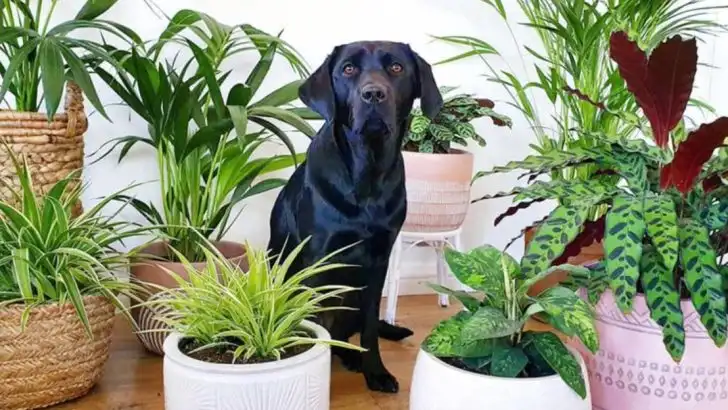If you’re a proud plant parent and a pet lover, you know the struggle—keeping your leafy greens thriving without putting your furry friends at risk.
Fortunately, it’s possible to create a peaceful coexistence between paws and petals with just a few mindful strategies. These 14 simple tips will help you pet-proof your plants, choose non-toxic greenery, and design a home that’s safe, beautiful, and harmonious for all its living beings.
From clever placement to natural deterrents, here’s how to keep your plants lush and your pets happy and healthy.
Pet-Safe Plants
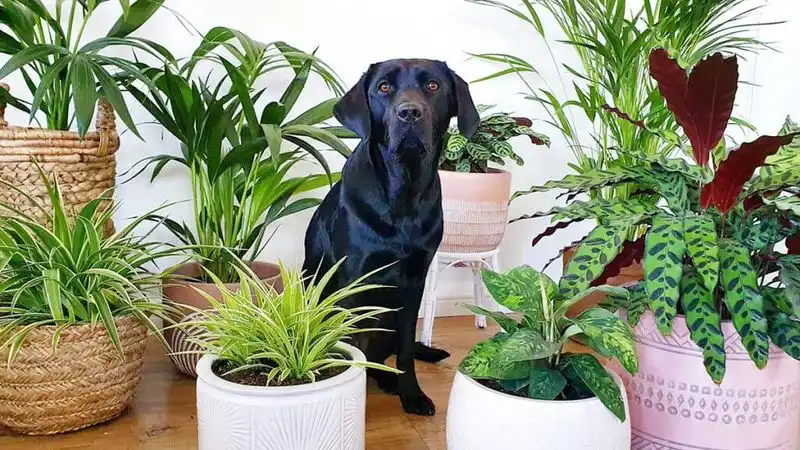
Did you know that certain plants are perfectly safe for curious paws? Spider plants and Boston ferns are excellent choices for households with pets. These greenery options not only enhance your living space with vibrant energy but also pose no threat to your furry friends. By selecting pet-safe varieties, you can enjoy the beauty of nature without worry. Consider placing them in decorative pots that add to your home’s aesthetic. With these plants, your pets can explore their surroundings without any risk, making it a win-win for plant lovers and pet parents alike.
Secure Plant Locations
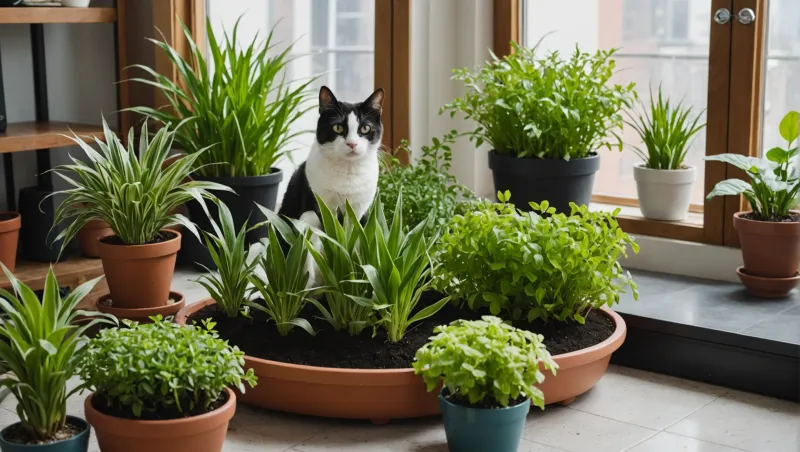
High shelves and hanging baskets aren’t just stylish; they can keep your plants safe from playful pets. Elevating your greenery onto shelves or using hanging planters ensures they remain out of reach. This not only protects the plants but also keeps pets safe from accidental ingestion. Plus, elevated plants can create a beautiful indoor garden effect. By designing your space with strategic height, you maintain a serene environment where both flora and fauna coexist peacefully. Such arrangements allow pets to roam freely without the temptation of a nibble or dig.
Pet-Friendly Plant Barriers
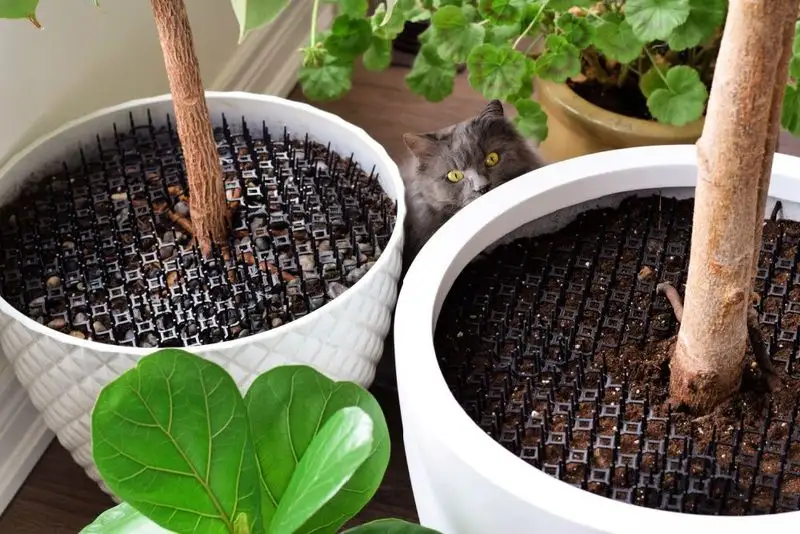
Sometimes, simple barriers can work wonders in keeping plants and pets in harmony. Using decorative small fences or garden borders around pots can deter pets from getting too close. These barriers can add a charming touch to your plant display while serving a practical purpose. They’re particularly useful for outdoor gardens or larger indoor plants. By creating a defined space for your greenery, you signal to pets that these areas are off-limits. This method helps in training them, promoting a peaceful coexistence between your leafy and furry friends.
Interactive Play Areas
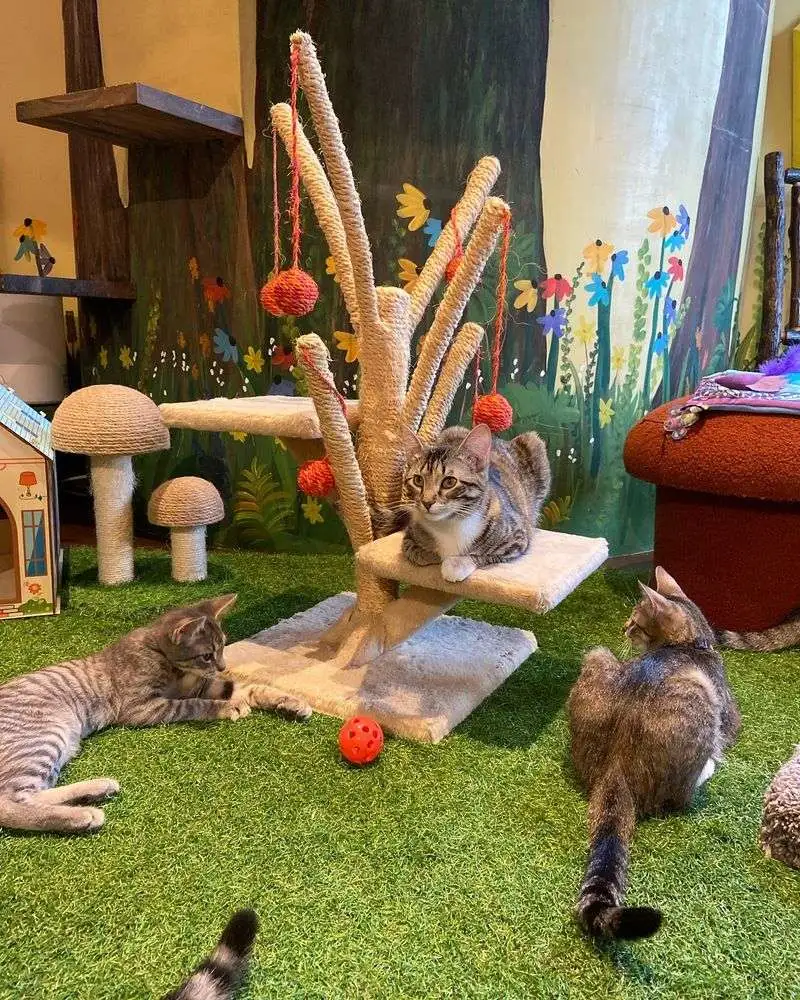
Creating a designated play area for your pets can redirect their energy away from plants. Interactive toys, scratching posts, and climbing trees provide entertainment and exercise, reducing the likelihood of pets meddling with your greenery. By offering an alternative focus, you satisfy their curiosity and instinctual behaviors. Cater to your pet’s specific needs by choosing items that stimulate both body and mind. This approach not only preserves your plants but also enriches your pet’s life, ensuring they remain happy and healthy in a plant-filled home.
Plant Protection Sprays

Homemade plant protection sprays can be a lifesaver. By using natural ingredients like vinegar or citrus, you can create a deterrent for pets without harming your plants. Spraying a diluted mix onto leaves and soil can discourage pets from chewing or digging. This simple yet effective method offers peace of mind to plant owners who also have furry companions. Be sure to test sprays on a small area first to ensure plants tolerate them well. With this approach, you protect your botanical friends while keeping pets safe from toxic substances.
Pet Training Techniques
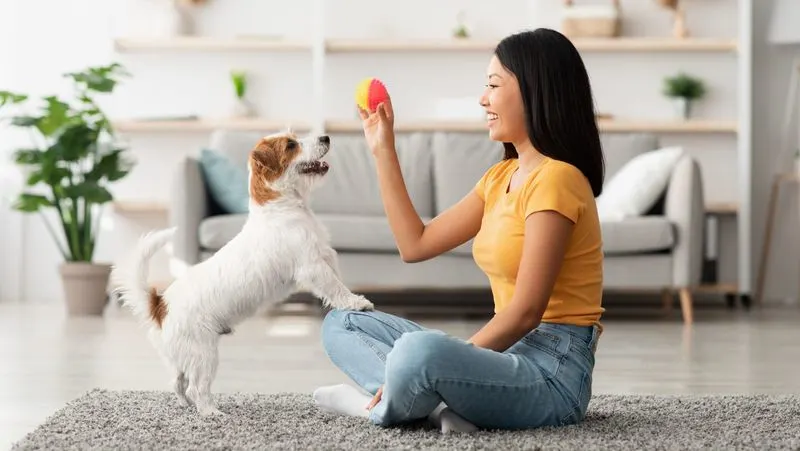
Training your pets to respect plant boundaries can be both rewarding and effective. Consistent commands and positive reinforcement help pets understand what areas are off-limits. Engaging a professional trainer or using online resources can provide guidance tailored to your pet’s personality and breed. This training not only safeguards your plants but also enhances the overall behavior of your pet. As they learn boundaries, pets become more respectful companions, allowing you to enjoy a home filled with both vibrant plants and well-behaved animals.
Choosing Hardy Plants
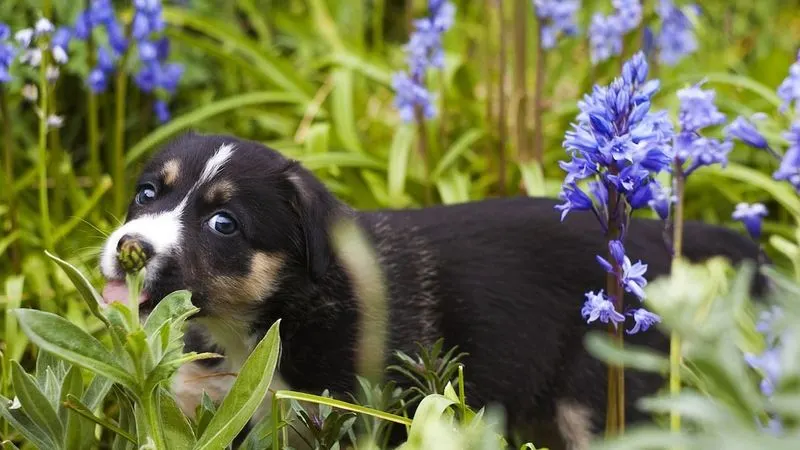
Opting for resilient plant varieties can ease the worries of pet owners. Succulents, snake plants, and pothos are known for their toughness and ability to withstand curious paws. These plants require minimal maintenance and can thrive in various indoor conditions. By selecting hardy species, you reduce the risk of damage from occasional pet interactions. This choice ensures that your home remains a green sanctuary, even with the most playful pets around. Enjoy the beauty of nature without constant concern over pet-induced wear and tear.
Smart Plant Placement
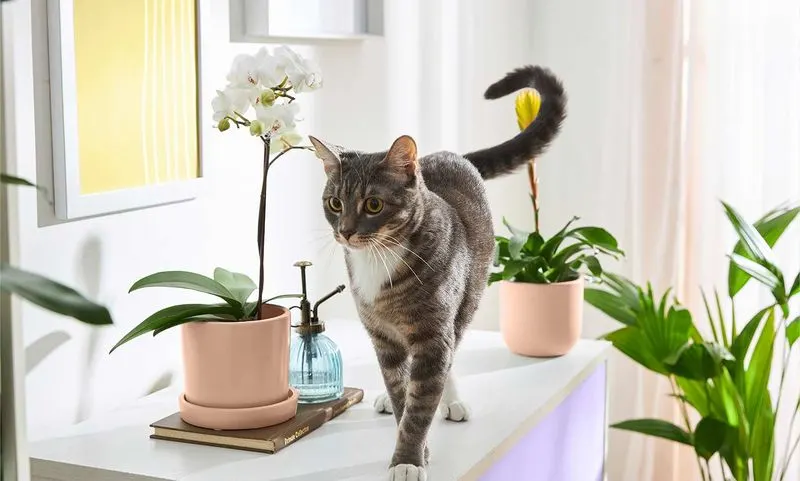
Arranging your plants in less accessible areas can keep both them and your pets content. Corners, high surfaces, and behind furniture are strategic spots that deter pets from tampering with your greenery. This placement not only maintains your home’s aesthetic appeal but also ensures plants remain safe. By assessing your space and considering your pet’s habits, you can design a layout that encourages harmony. This thoughtfulness allows plants to flourish without interference, creating a peaceful environment for all household members.
Pet Deterrent Devices
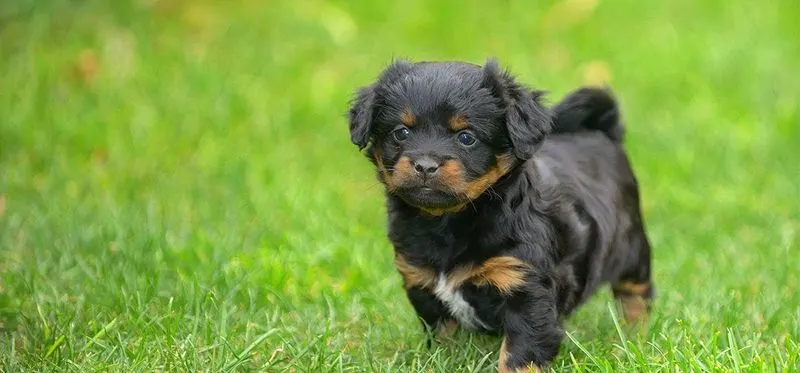
Technology can lend a hand in keeping pets and plants happy together. Motion-activated devices emit harmless sounds or sprays to deter curious pets from approaching plants. These deterrents are effective in training pets to avoid specific areas. While they may require an initial investment, the benefits of preserving your plants are worthwhile. Such gadgets provide an innovative solution for pet owners seeking peace of mind. By integrating technology, you maintain a harmonious balance, ensuring your green companions stay unscathed by inquisitive paws.
Edible Plant Alternatives
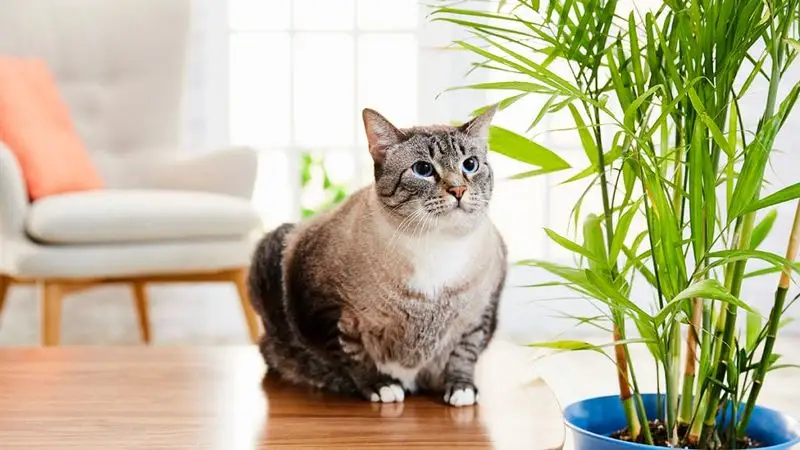
Providing pets with their own edible plant options can satisfy their urge to chew. Wheatgrass, catnip, and basil are safe and enjoyable for many pets, giving them a healthy outlet. By offering these alternatives, you redirect their attention away from non-edible houseplants. Not only do edible options support a pet’s health, but they also add a unique element to your indoor garden. This strategy fosters a mutual respect between pets and plants, allowing both to coexist happily in your living space.
Pet-Safe Fertilizers

Using pet-safe fertilizers ensures your plants thrive without posing risks to your animals. Many commercial fertilizers contain chemicals harmful to pets. Opt for organic or homemade alternatives that nourish your plants without side effects. Ingredients like compost or bone meal offer safe options that support plant health. By choosing non-toxic fertilizers, you protect pets from accidental ingestion while maintaining a lush garden. This careful consideration helps create an environment where pets and plants can flourish side by side, worry-free.
Pet-Friendly Terrariums
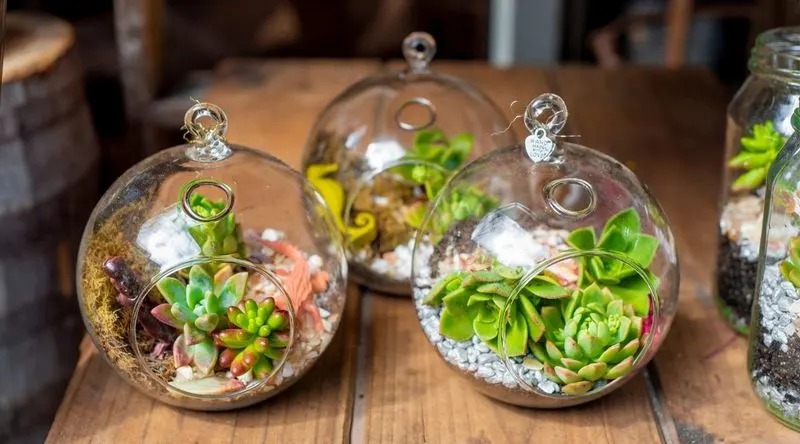
Terrariums can be a striking addition to your home decor while keeping plants out of reach. Enclosed in glass, these mini ecosystems provide a safe environment for both plants and pets. Displaying them on high shelves or within cabinets adds another layer of protection, preventing curious paws from causing harm. Terrariums require minimal maintenance and can feature a variety of plant species, offering a visually appealing solution. With their elegance and safety, they make a great choice for plant enthusiasts who share their space with pets.
Pet-Plant Bonding Time
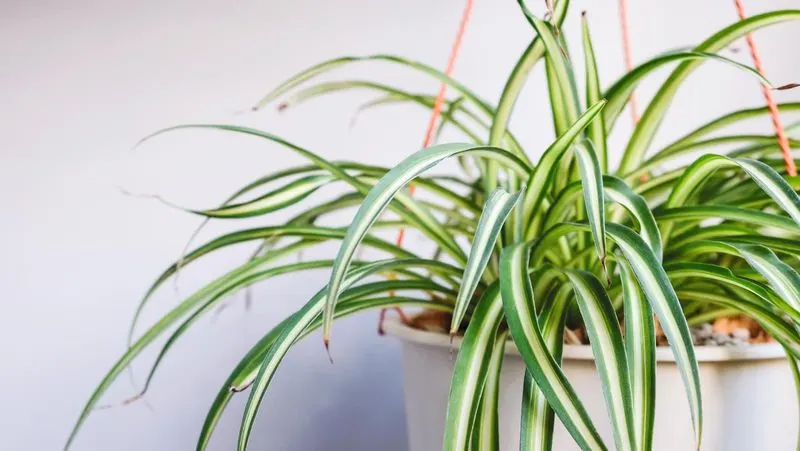
Introducing your pets to new plants can nurture a positive relationship. Allow pets to observe and sniff new additions under supervision, teaching them the importance of gentle interaction. This practice can reduce curiosity-driven incidents over time, supporting a bond between your furry friends and plant life. By integrating pets into your plant care routine, you foster an environment of shared enjoyment. This approach not only cultivates respect but also enriches the dynamics of your home, making it a place where both pets and plants thrive together.
Routine Check-Ups

Regularly inspecting your plants and keeping an eye on your pets’ behavior ensures harmony in your home. Routine check-ups help catch any potential issues early, whether it’s a wilting plant or a pet showing too much interest. By staying vigilant, you can address concerns promptly, maintaining a balanced environment. This proactive approach not only preserves the well-being of your plants but also keeps pets happy and healthy. With consistent attention, you foster a nurturing space where both can coexist peacefully, bringing joy to your household.

